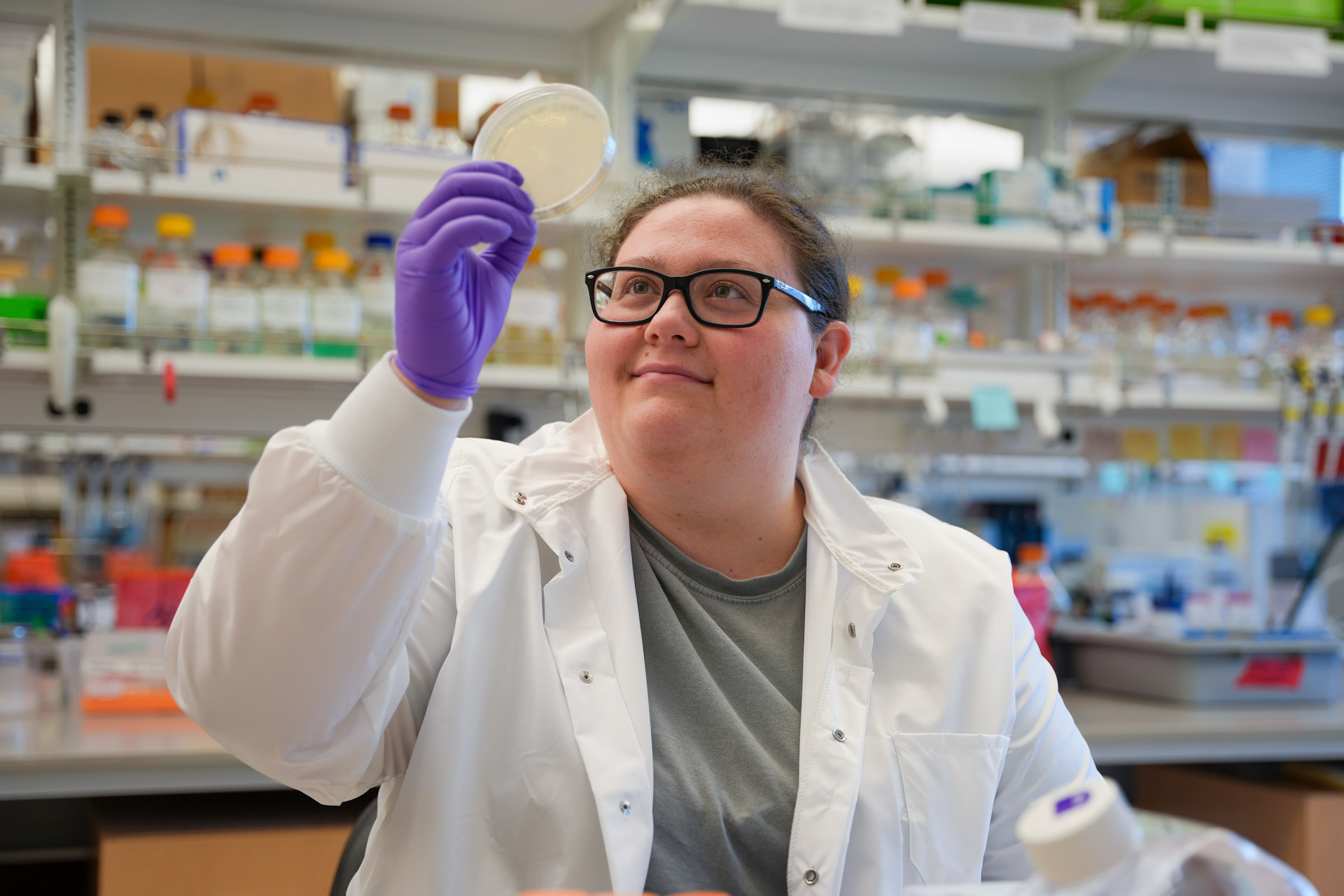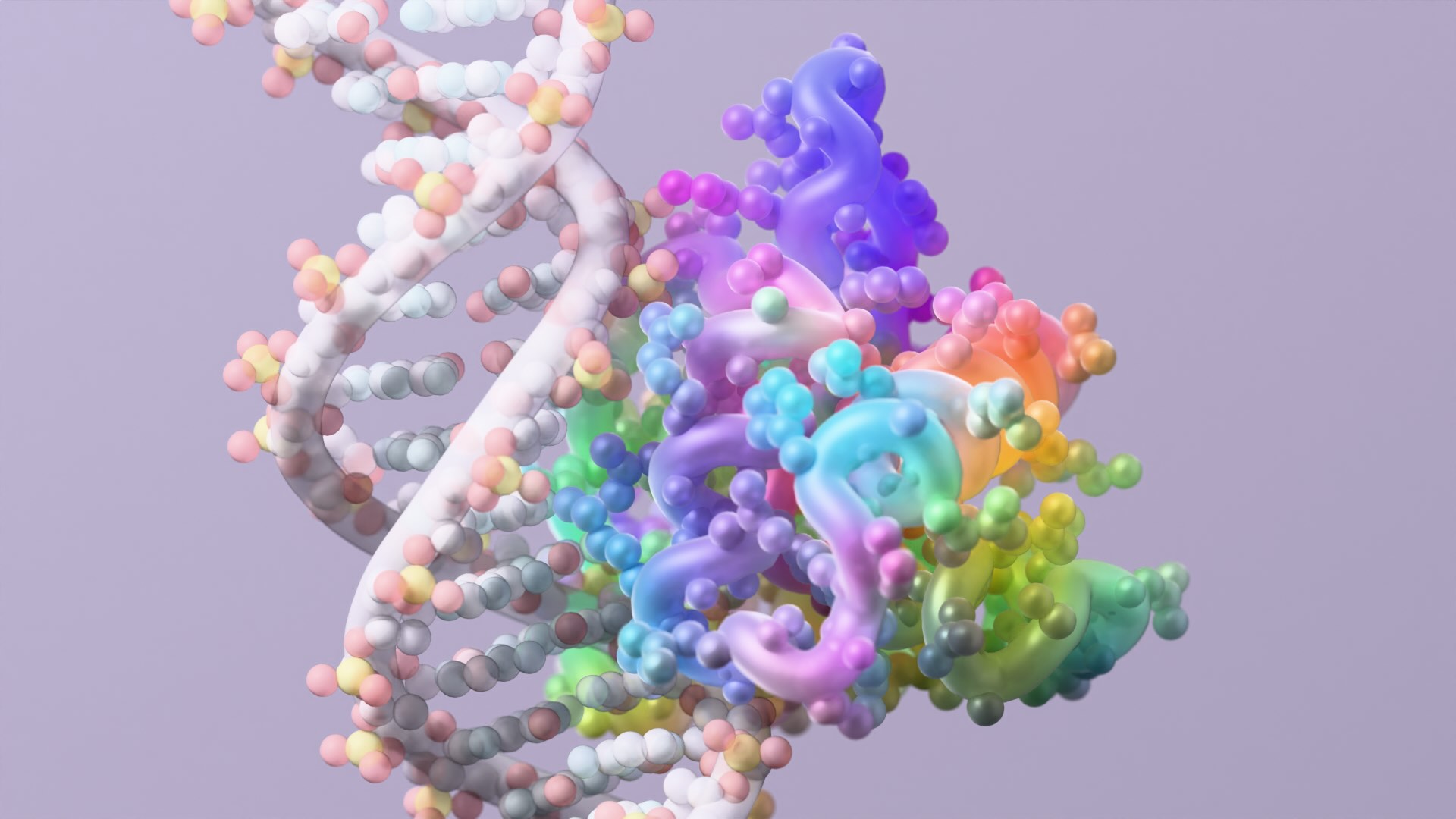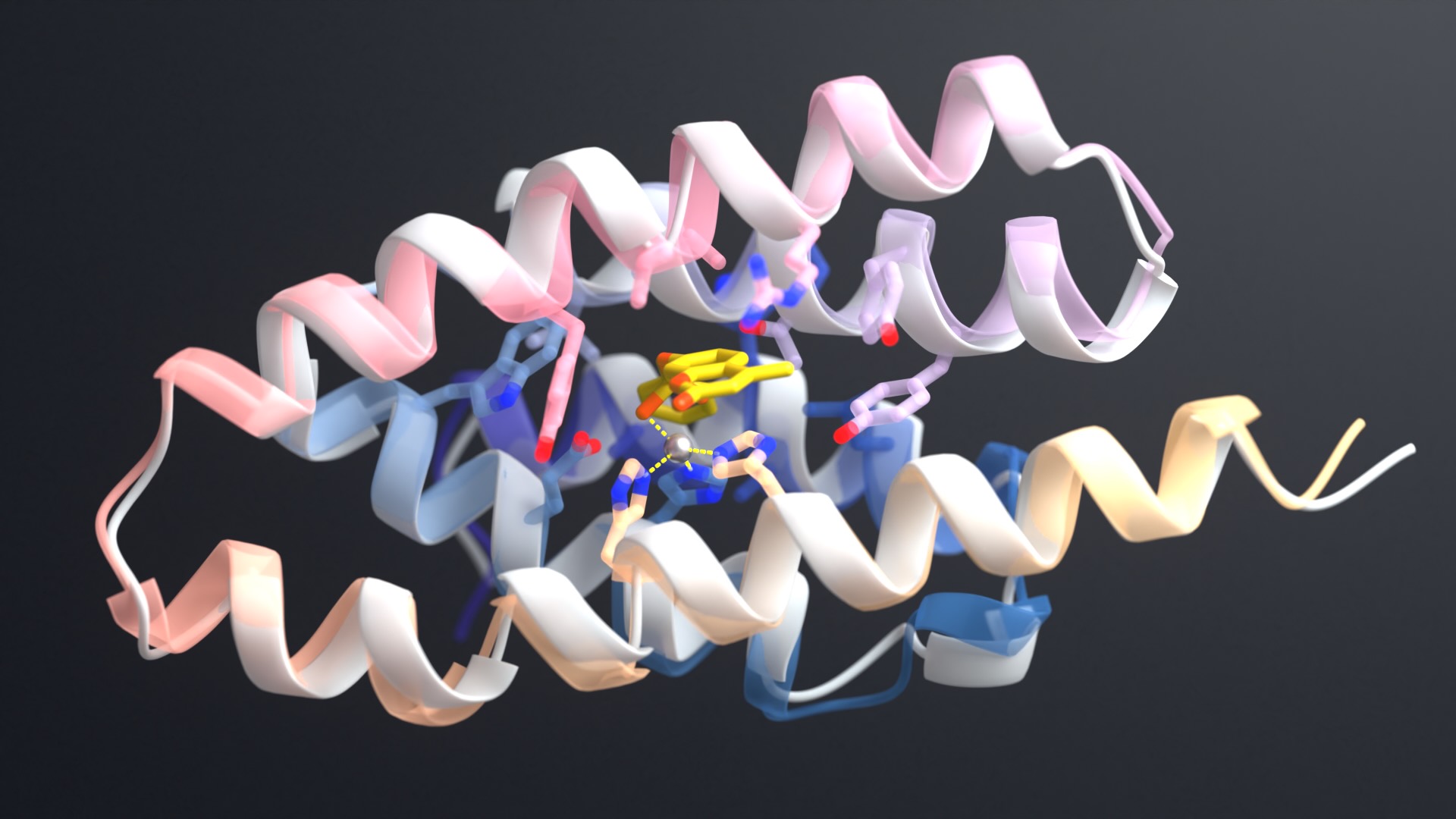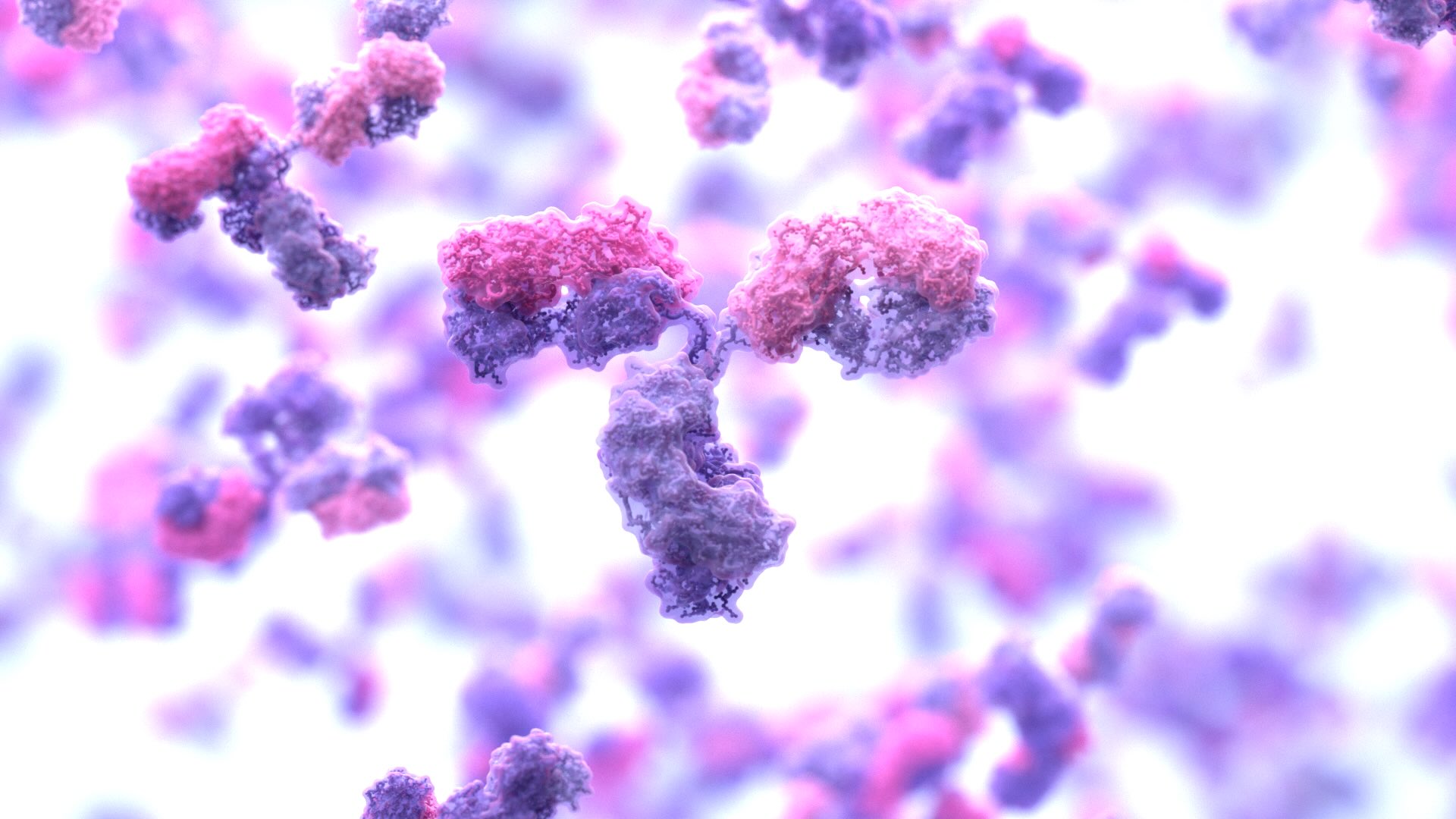During the COVID-19 pandemic, two vaccine technologies came of age: mRNA delivery and custom protein nanoparticles. Each had clear strengths. mRNA vaccines are fast to manufacture and excel at triggering T-cell responses. Protein nanoparticle scaffolds, meanwhile, mimic 3D viral features and thus help the body produce broad and durable antibody responses.
What if these technologies could be combined, capturing the benefits of both?
That’s the idea behind a new study from the King Lab published today in Science Translational Medicine. A team led by graduate student Grace Hendricks showed that custom protein particles can be delivered by mRNA — a best-of-both-worlds vaccine technology platform we are calling mRNA-launched nanoparticles.
Publications
Computationally designed mRNA-launched protein nanoparticle immunogens elicit protective antibody and T cell responses in mice
Published in: Science Translational Medicine [PDF]
Authors: Grace G. Hendricks, Lilit Grigoryan, Mary Jane Navarro, Nicholas J. Catanzaro, Miranda L. Hubbard, John M. Powers, Melissa Mattocks, Catherine Treichel, Alexandra C. Walls, Jimin Lee, Daniel Ellis, Jing Yang (John) Wang, Suna Cheng, Marcos C. Miranda, Adian Valdez, Cara W. Chao, Sidney Chan, Christine Men, Max R. Johnson, Samantha K. Zepeda, Sebastian Ols, Harold Hui, Sheng-Yang Wu, Victor Lujan, Hiromi Muramatsu, Paulo J.C. Lin, Molly M.H. Sung, Ying K. Tam, Elizabeth M. Leaf, Norbert Pardi, Ralph S. Baric, Bali Pulendran, David Veesler, Alexandra Schäfer, Neil P. King
Lead Author

The advantage of mRNA delivery
Messenger RNA, or mRNA, is an information-carrying molecule that every cell produces when building proteins. Instead of manufacturing protein-based medicines in a factory, recipes for protective proteins can be written into new strands of mRNA. Once delivered via an injection, cells temporarily produce the proteins that these messages call for. If done properly, this can stimulate the immune system and unlock protection against specific illnesses and infections.
A key advantage of mRNA vaccines is that they are much simpler to produce than older technologies. Writing new protein-coding instructions into RNA molecules has little impact on how these molecules are manufactured. This is very different for vaccines that contain protein molecules or inactivated pathogens — each time one of these is invented, it can take substantial time, skill, and investment to figure out how to manufacture enough vaccine product. mRNA vaccines thus allow for rapid vaccine development, as seen during the COVID-19 pandemic.
Combining two technologies
In the new study, the team created mRNA molecules that contain instructions for building a single custom protein: one designed to form a tiny protein ball studded with viral fragments. Prior research from the King Lab and other groups has shown that presenting protein antigens in this way — as tiny particles that mimic the surface features of a virus — can help the immune system mount more protective responses, even when much lower vaccine doses are used.
“Effective vaccines teach the immune system to protect against future encounters with a pathogen. We’ve shown that by using protein design to sculpt the molecular structure of a vaccine, we can boost its performance by a factor of ten or more.”
Neil King, PhD, senior author and associate professor of biochemistry at UW Medicine
Grace used protein design software to remake the surface of a computer-generated protein nanoparticle, fusing a viral antigen to it. This fusion protein was then optimized for mRNA expression in cells, providing a designed self-assembling protein nanoparticle compatible with mRNA delivery.
Vaccine performance
Using SARS-CoV-2 as a model virus, the team found that the new mRNA-launched nanoparticle vaccines:
- Produced 5–28 times higher neutralizing antibody titers in mice compared with current mRNA vaccine formats that contain similar viral fragments but not the nanoparticle patterning.
- Induced strong CD8 T cell responses in mice, something protein-based vaccines alone typically lack. These are important for preventing viruses from spreading in the body.
- Protected mice against both ancestral SARS-CoV-2 and the Omicron BA.5 variant, preventing severe disease and clearing virus from the lungs.
“Combining multiple vaccine innovations into a single new technology provided high potency and broad protection. This may enable lower doses of mRNA vaccines to still be protective while reducing any potential side effects.”
Grace Hendricks, lead author
Why it matters
This study is the first to show that computer-generated protein nanoparticle vaccines can be delivered via mRNA while retaining their structural integrity and immune potency. Beyond coronaviruses, the same approach worked with other viral antigens, hinting at a broad platform for future vaccines.
“mRNA-launched nanoparticle vaccine technology has the potential to become a customizable platform for vaccines against rapidly-mutating viruses, which could be particularly useful for pandemic prevention and response.”
Neil King, PhD
Additional Information
While this study included safety and efficacy testing in non-human animals, human clinical trials are needed to determine how vaccines perform in people.
This project was led by the Institute for Protein Design at UW Medicine. Key collaborators included the IPD Core R&D Labs, the Veesler Lab at UW Medicine, the Pulendran Lab at Stanford University School of Medicine, the Baric Lab at the University of North Carolina at Chapel Hill, the Pardi Lab at the Perelman School of Medicine at the University of Pennsylvania, and Acuitas Therapeutics.
This research was funded by the Gates Foundation (INV-010680, INV-043758, INV-018675, INV-003875), Burroughs Wellcome Fund, Howard Hughes Medical Institute, National Institutes of Health (1P01AI167966, U19AI181881, DP1AI158186, 75N93022C00036, R01AI153064, P01AI158571,P01AI172531, S10OD032290), and a gift from the Higgins family.




